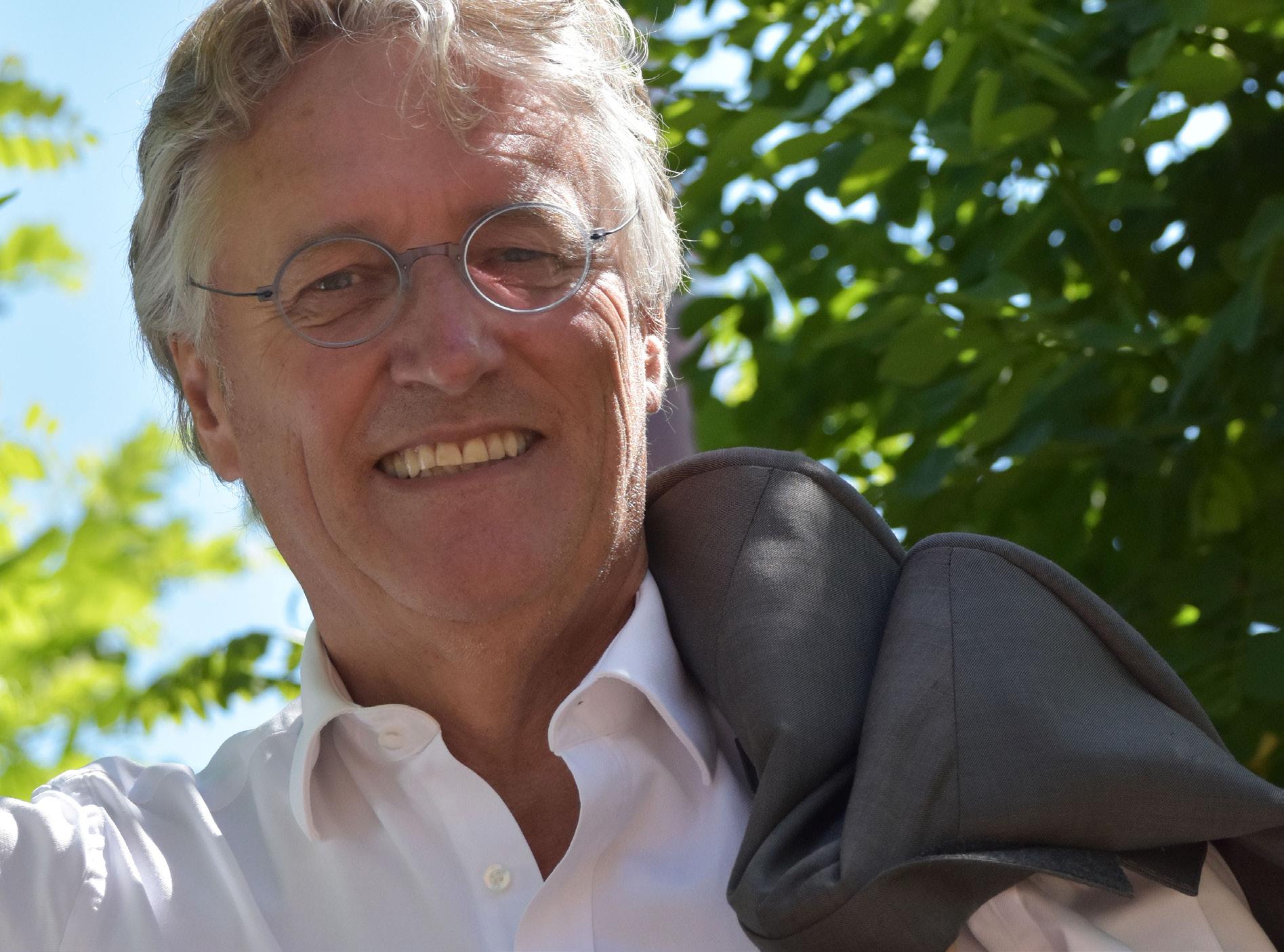
5 minute read
John Jorritsma
John Jorritsma (born in Bolsward in Friesland in 1956) has been the Mayor of Eindhoven since 2016. At the same time he is chairman of the ‘Veiligheidsregio Zuid Brabant’ (Safety Region South-East Brabant). In that capacity, handling Corona has been his main activity since February. The Security Regions play a crucial role in the (implementation of the) measures to stop the virus. “There is a lot of tension and these are intense days. But that is all relative if you compare that to the effects that many others are suffering.
The impact of this corona crisis is enormous. In Brabant we had the dubious honor of having the first corona patient. Everyone looked at Brabant. With my colleagues Theo Weterings and Jack Mikkers, respectively chairman of the Safety Region Central and West Brabant and Safety Region Brabant-North, we immediately put our heads together and announced measures for the whole of Brabant at the beginning of March, such as closing the hotel and catering industry and canceling events. It hurts, but needed to be done, it was necessary to contain the virus. In the corona era, we try to ensure that internationals are well informed of all corona developments. Therefore, with a number of parties we developed the “Corona Portal”, not only in terms of measures and financial support, but also for social initiatives designed to fight loneliness.”
Advertisement
In one of your presentations I attended, you, Mayor Jorritsma, referred to the fact that more and more internationals are coming to our region and that you consider it of the utmost importance that the original and new people of Eindhoven interact well and also mingle.. What’s your vision of how Eindhoven works on this and which bottlenecks are there.
“Even now, or rather: particularly now, the connection between all Eindhoven residents is important. This concerns a connection between the resident born and raised in Eindhoven and the Eindhoven citizens who were brave enough to build a new future, often far from the home country. This brought a number of challenges that should not be underestimated. It is basically about how Eindhoven as a city can create a 'sense of home', thereby contributing to the universal needs of 'belonging' and 'being valued'.
Creating a pleasant and accessible living environment in this way has a number of effects. With a focus on promoting mutual understanding and the contribution of the internationals to our city, you contribute to social cohesion. Another desired effect is, that the feeling of home that the international experiences, leads to a longer stay in the region and thus to retaining the talent that our economy needs so badly. Certainly to remain strong during this period and beyond.
For the long run,and to create that pleasant and accessible living environment,we have been working on the so called ’Living In’ program since 2016. Starting point is that migration is a 'family decision' and that our response as a host city must therefore also be aimed at that family, meaning we also focus on the partner and children. They should also feel at home here. This largely determines whether people who come to work for companies here also want to commit to our city.
We explicitly work with the internationals on this. This leads to intensive cooperation on a daily basis and that example is increasingly being followed in the region. Ensuring a good first impression, improving the (English) accessibility of facilities and promoting the learning of the Dutch language are essential to establish a real connection with the other Eindhoven citizen as an international.
knowledge institutions, which ensures that it is also pleasant for new Eindhoven residents to live, work and relax in our region. For example, we pay much attention to the professional integration of highly educated husbands, wives or partners. About 60 percent of them have a non-technical background. We endeavor to also use their talent for Eindhoven by linking these people to the mainly Dutch SMEs. We support the same SMEs by guiding them in hiring international talent. Simply because this ensures that we can retain all the talent for our city. We also try to ensure that international students stay in Eindhoven or the surrounding area after they have completed their education. For universities, this subject is fairly new and slowly but surely the importance of integration of international students is recognized and a creative look is taken at what promotes this integration.”
And what are the bottlenecks? “For many people, internationalization is still a 'ver-vanmijn-bed show’ (distant reality). As a result, new Eindhoven residents can’t always count on empathy or understanding. Too many international families are left to their own after one of the two partners is hired for the first time in a company in our region. With the ‘Living in program’, employers and parties in the city try to make clear what the challenges for internationals are.

For example, by having a spouse tell its story to an employer, employers understand that as a company they can do more for their (international) staff than they did before. This kind of thinking is what we are looking for, which stands for that inclusive mindset and the willingness to take action.
It is also a challenge for new Eindhoven residents to enter a Dutch circle of friends. In general, we Dutch have a fairly strict division between work and private life and the average employee doesn’t hang out with his international colleague during the weekend. Fortunately we see a shift in this, an increasing number of Dutch people are developing a more international mindset.
Since 2012, The Hub, was promoted as ‘the international living room’, where internationals and local Eindhoven residents could meet. It closed permanently over the last weeks, can you indicate whether there are plans for a restart or revival of The Hub?
“The closure of The Hub creates a kind of new energy. Many parties in the city recognize the importance of a living room where all Eindhoven residents can meet. An inventory is currently being made of what is needed and how the new plans may be implemented. For now it’s important how the redevelopment of the VDMA site will take place. It looks like the current Hub's location can be used for another 1 to 1.5 years and we’re looking for other locations elsewhere in the city. Whether in the meantime some of the usual activities of the ‘old’ Hub can take place is unsure and depends on the redevelopment and the phasing of the project.










